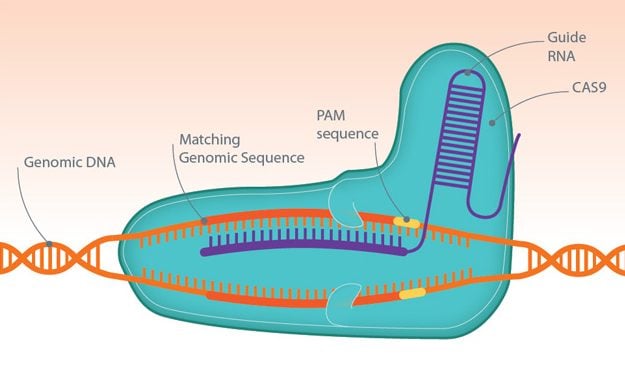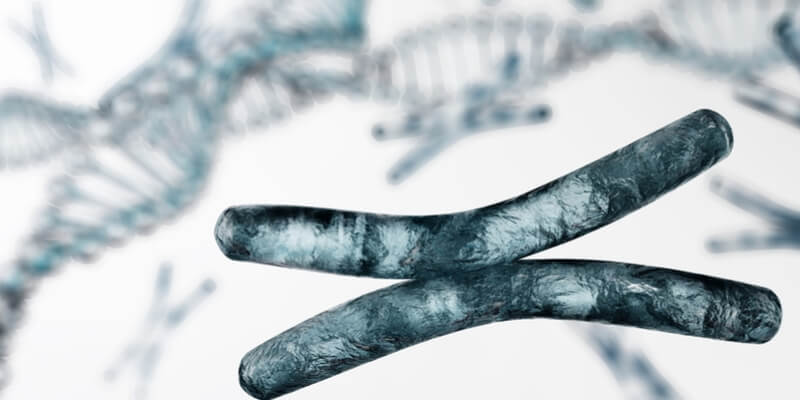Newsletter Signup - Under Article / In Page
"*" indicates required fields
In the US, the first CRISPR-edited crops were able to bypass GMO regulations, but Europe’s plant scientists are still awaiting the final go ahead.
In April 2016, the US Department of Agriculture (USDA) gave the green light to the first CRISPR-edited crops, a mushroom that has been engineered to resist browning and a waxy corn from DuPont that had been genetically modified to contain starch composed exclusively of amylopectin. In a pair of letters, the USDA explained that the new GM crops would not have to be regulated as genetically modified organisms (GMO) as they are essentially not different from conventionally bred plants.
The decision by the US Government has ushered a new era in agriculture: new methods like CRISPR are making gene editing as easy and cheap as ever without adding “foreign” DNA from other species, the sticking point for many regulators. Now, these methods could allow scientists to tweak plants in order to increase their yields, make them pest resistant, or improve a plant’s nutritional qualities without having to apply for regulatory approval which could take years and cost tens of millions of dollars.
With the world’s population set to increase from the current 7.3B to 9.7B by 2050, agricultural output will have to increase and gene editing could represent a much sought-after solution. Gene editing technologies such as Zinc Finger Nucleases, TALENs, and the latest CRISPR tools are mechanistically different from the earlier transgenic technologies used to create the largely controversial GMOs.

Regular genetic engineering usually involves inserting a large section of DNA from an entirely different kind of organism with little control over where in the genome it lands. Gene editing is different: modern nucleases are able to make highly specific cuts in the DNA strand. “You can change even a single base pair, or you can delete a gene very precisely,” Pamela Ronald, a plant pathologist at the University of California, Davis, told Nature.
These ‘new breeding techniques‘, as they are sometimes called, yield a final plant that has a few tweaked nucleotides but cannot be distinguished from a wild plant that might have acquired the same mutation by traditional plant breeding. Only, traditional plant breeding is much more time intensive and breeders have to ensure they are not breeding out the plant’s other desirable characteristics.
In the US, a number of gene-edited plants already sidestepped the GMO-regulation before the advent of CRISPR. Calyxt, a US-subsidiary of the French biotech Cellectis is already growing gene-modified soybeans that contain less saturated fatty acids for the production of oil. The soybeans have been modified by turning off two genes using the TALEN technology. “There is nothing taken out or added to the [the soybeans],” commented Cellectis’ CEO André Choulika to the The New York Times. “It’s what nature would have produced.”

The US, for now, has ruled that the regulations depend essentially on the product, not the process by which the gene-modified crop is made. Meanwhile, Europe is still having trouble deciding whether gene-edited plants should be regulated as GMOs, which would mean that not only the cultivation of GM crops but also research on gene-edited plants could quickly come to a standstill.
In light of this regulatory uncertainty, it’s maybe not surprising that only few biotech companies in Europe are working in the field. As Giacomo Bastianelli, CEO of Meiogenix, told me, “most of the agricultural companies working on gene editing are in the US. And this is a pity because many of the innovations were actually developed in Europe.”
Meiogenix, based in Paris, has developed a new gene-editing technology that that aims to make the natural process of meiotic recombination more efficient and increase the genetic diversity of plants. It is based on the fusion of the Spo11 endonuclease, responsible for initiating meiotic recombination, to a DNA binding domain, such as an inactivated Cas9 or TALE protein in order to target meiotic recombination to the desired region.
“In our case, we don’t introduce any foreign DNA into the final product, not even a mutation, so there is actually no difference from natural plants. The only difference is that we increase the chance of finding a good recombinant plant that you might find in nature, but it would take years of plant screening,” explained Bastianelli.

The Dutch biotech Keygene is using another gene-editing method, called oligo-directed mutagenesis (ODM), to optimize crops. ODM allows for the creation of single point mutations in the genome using oligonucleotides that carry a single mismatch with respect to the target sequence. The company itself refers to its technologies as non-GMO, and a number of EU member states share this opinion.
In 2015, Sweden decided in favor of non-regulation of gene-edited crops and told its plant scientists that they could go ahead, though it promised to reverse its position should the EU decide on regulation. Germany, meanwhile, is currently stimulating a public dialogue on the debate. The German Consumer Protection Office recently stated its position in a public letter, explaining that it does not believe gene-edited organisms modified with CRISPR or ODM should fall under the European regulation for GMOs.
However, when the consumer protection office told the US-based biotech Cibus that its herbicide-resistant oilseed rape would not need to be regulated in the country, opponents to modified plants and NGOs immediately brought a court case. This case is now awaiting guidance from the European Commission, and will surely not be settled in the election year.

Such a public reaction reflects the concerns of European citizens and NGOs, which mostly refuse to accept anything that has a GM-tag on it. Only last year more than 100 Nobel laureates signed a letter challenging Greenpeace to halt its anti-GMO campaigns preventing the introduction of potentially life-saving crops, including the famous Golden Rice.
The recent advances in gene-editing, which make GM crops safer than ever, could open up a chance to start over and overcome the GMO stigma. Yet, this will require more effort to engage in public dialogue and address the concerns and values of the citizens.
As David Berry, General Partner at Flagship Pioneering, commented at Refresh last week, “The biggest challenge is the way that biotech has been presented to the public – almost in the scariest way possible. So the natural reaction is fear. But what’s been missing is to ask the question of what is necessary to show that it’s safe? That’s what we need to focus on and we need to involve the public, scientists, and governments to answer that question.”
Independent of whether gene-edited plants are safe or not, Europe might be better off without herbicide resistant plants… but that’s a different debate.
Images via shutterstock.com / igorstevanovic, ustas7777777, artjazz; horizondiscovery.com






